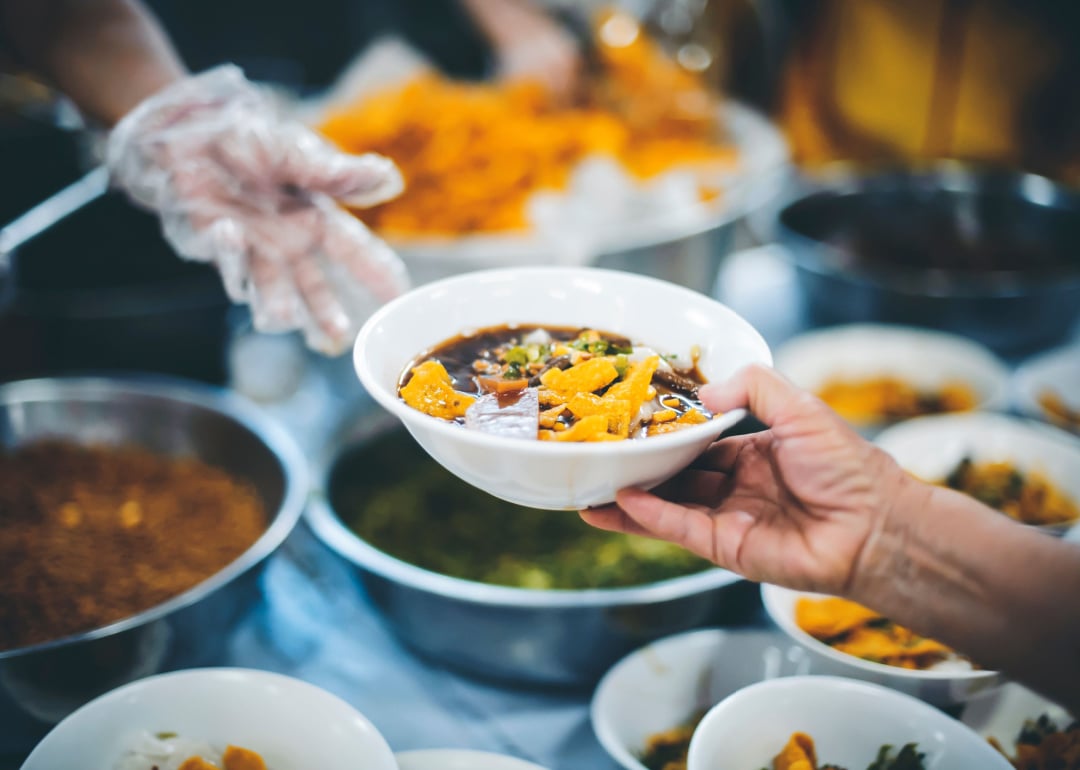
States where the most residents are struggling to find their next meal
States where the most residents are struggling to find their next meal
Nearly 12% of U.S. adults reported being hungry sometimes or often during a Census Bureau survey in June 2023.
The longstanding problem does not affect all Americans equally. A Department of Agriculture study examining data from 2019 and 2020 found that children, single parents, single adults, low-income households, people of color, and households in the South were all more likely to experience food insecurity than the national average.
Overall, the country saw a negligible uptick in hunger from June 2022, with less than 1 additional percentage point of adults reporting their household sometimes or often didn't have enough food.
Stacker analyzed Census Bureau data to rank each state based on how many residents reported going hungry. Population estimates are from the Census Bureau. Percentages represent the portion of the overall adult population that reported to the Census Bureau in mid-June that they lived in a household where there was either sometimes or often not enough food to eat in the last week.
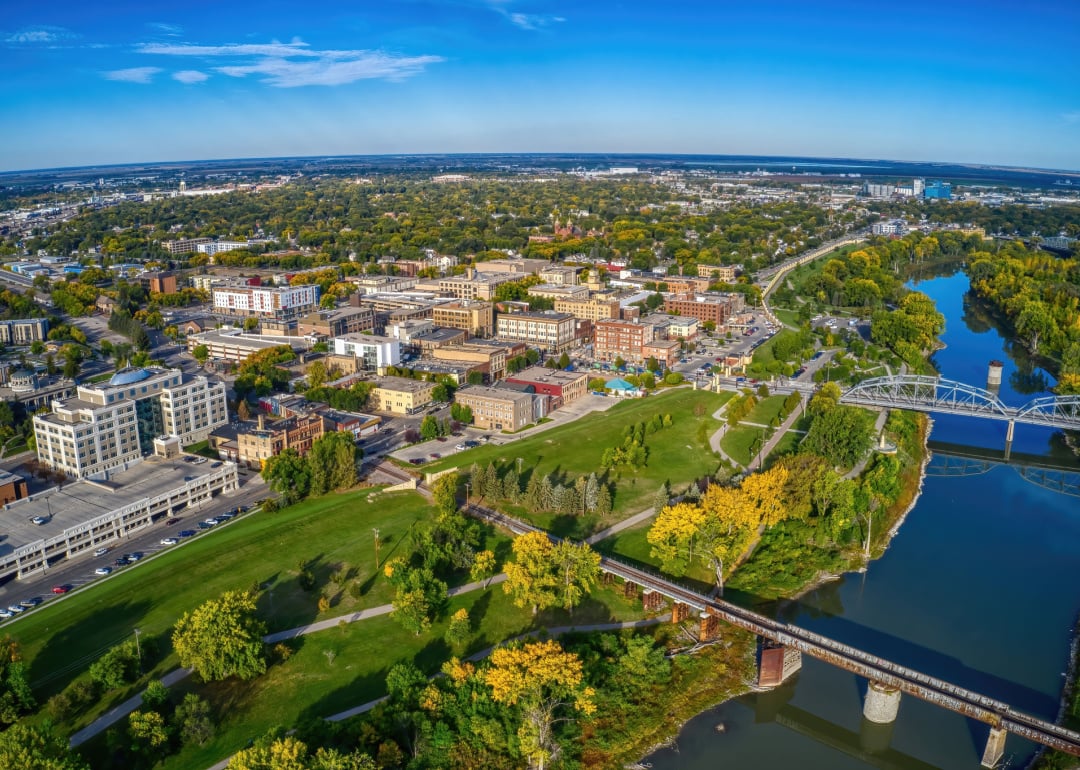
#51. North Dakota
- Percent of adult population hungry: 6.4%
- 1-year change: -2.1 percentage points
- Total adult population: 570,659
The state's only food bank, Great Plains Food Bank, supplies more than 300 food pantries, soup kitchens, and shelters across the state. The state's website also offers several other options for people to get help finding food, including mobile food pantries to deliver food in remote areas, collaborations with farmers, and connections to federal programs.

#50. Maine
- Percent of adult population hungry: 6.9%
- 1-year change: -0.7 percentage points
- Total adult population: 1,113,361
In 2019, lawmakers asked the state's Department of Agriculture, Conservation and Forestry to develop a plan to end hunger by 2030. "Current levels of hunger and food insecurity—as high as 16.4% of the population in recent years—extract an enormous human toll," the department reported. In recent years, the Good Shepherd Food Bank, the state's largest, has raised more than $250 million toward its goal of ending hunger in the state. For the year ending June 30, 2023, the food bank distributed 31.5 million meals statewide.

#49. New Jersey
- Percent of adult population hungry: 8.2%
- 1-year change: -2.2 percentage points
- Total adult population: 7,122,199
The Community FoodBank of New Jersey distributes food to pantries, soup kitchens, and shelters in most of the state's 21 counties. In just one year, it distributed 103 million pounds of food, enough for 86 million meals; one-third was fresh produce. It also helps residents apply for state and federal aid programs.

#48. Vermont
- Percent of adult population hungry: 8.4%
- 1-year change: -0.3 percentage points
- Total adult population: 510,057
The Vermont Foodbank, operating since 1986, supplies more than 150,000 Vermonters annually. Hunger Free Vermont has been working to end hunger in the state since 1993 by supporting and urging the expansion of federal and state programs providing food assistance to hungry people.

#47. Delaware
- Percent of adult population hungry: 8.5%
- 1-year change: -2.5 percentage points
- Total adult population: 802,595
Delaware Health and Social Services lists food banks and food pantries around the state. As federal food-aid programs contract benefits extended during the coronavirus pandemic, the Delaware Food Bank is among the groups seeking additional donations.

#46. Missouri
- Percent of adult population hungry: 8.6%
- 1-year change: -2.5 percentage points
- Total adult population: 4,681,751
The Feeding Missouri network of food banks distributes 120 million pounds of food annually to more than 1 million Missourians. It reaches across the state's 114 counties and St. Louis through more than 1,500 agencies and programs.

#45. Colorado
- Percent of adult population hungry: 8.9%
- 1-year change: 1.5 percentage points
- Total adult population: 4,553,684
Costella and Crowley counties had the highest hunger rates, with 17% of residents categorized as food-insecure in 2020, according to data from the University of Wisconsin Population Health Institute. Douglas and Elbert counties had the lowest food insecurity rates, at 6%. The state's Department of Human Services coordinates government benefits with food-distribution partners across Colorado.
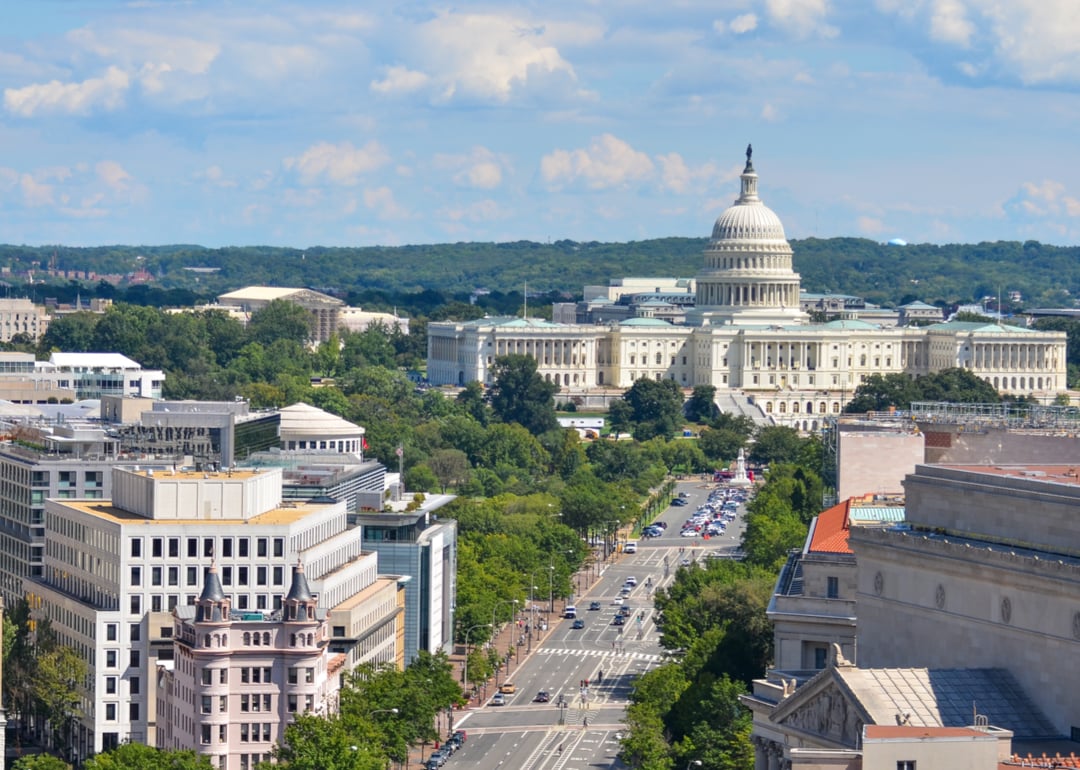
#44. District of Columbia
- Percent of adult population hungry: 9%
- 1-year change: -1.3 percentage points
- Total adult population: 514,777
Across the District, churches, nonprofit agencies, and government offices offer free food, money to buy food, and other support to hungry D.C. residents.

#43. New Hampshire
- Percent of adult population hungry: 9.2%
- 1-year change: 1.9 percentage points
- Total adult population: 1,117,829
NH Hunger Solutions is a nonprofit that touts its effectiveness in supporting government programs to fight hunger and encouraging eligible Granite State residents to seek help getting enough food. The state's Department of Health and Human Services has specific programs for families with children and senior citizens who don't have enough food.
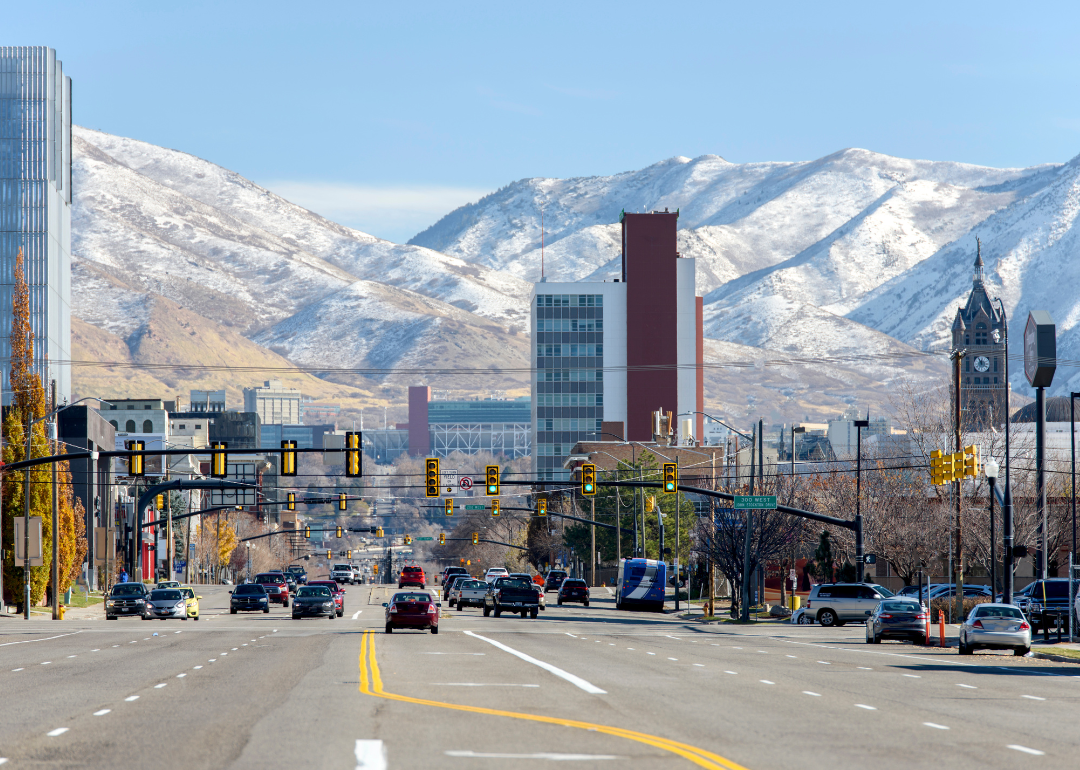
#42. Utah
- Percent of adult population hungry: 9.2%
- 1-year change: 1.5 percentage points
- Total adult population: 2,450,650
A new state commission will keep the public and lawmakers informed about how to help food-insecure Utahns. The Utah Food Bank keeps track of food pantries across the state and offers an interactive map to help people find the most convenient one.

#41. Washington
- Percent of adult population hungry: 9.2%
- 1-year change: 0.2 percentage points
- Total adult population: 6,050,305
About 13% of Seattle adults are food-insecure, according to a 2019 government report. In 2019, 1.1 million Washingtonians at risk of going hungry received 148 million pounds of food through food banks, pantries, and other programs across the state.

#40. Minnesota
- Percent of adult population hungry: 9.3%
- 1-year change: 2.1 percentage points
- Total adult population: 4,311,532
In 2022, the Food Group, a Minnesota-based nonprofit, provided more than 6 million meals to hungry people in Minnesota and Wisconsin, which the agency also serves. Another agency, Hunger Solutions, tracked 5.5 million visits to food shelves across the North Star State in 2022.

#39. Oregon
- Percent of adult population hungry: 9.3%
- 1-year change: 1.7 percentage points
- Total adult population: 3,315,259
A 2022 Ford Family Foundation analysis found that Grant and Lake counties have the most food insecurity, while Washington and Hood River counties have the least. The Oregon Food Bank maintains a list and an interactive map of more than 600 places Oregonians can get free groceries and produce or free meals.

#38. Massachusetts
- Percent of adult population hungry: 9.6%
- 1-year change: 0.2 percentage points
- Total adult population: 5,427,691
A nonprofit called Project Bread has a phone hotline anyone can call to get help finding food immediately and over the long term. Several food banks around the state help keep local food pantries stocked.

#37. Rhode Island
- Percent of adult population hungry: 9.6%
- 1-year change: -5.1 percentage points
- Total adult population: 848,183
The state government's Rhode to End Hunger Initiative helps coordinate food donations—from people and businesses, including restaurants and markets—and maintains an interactive map of locations where Ocean Staters can get food when needed.
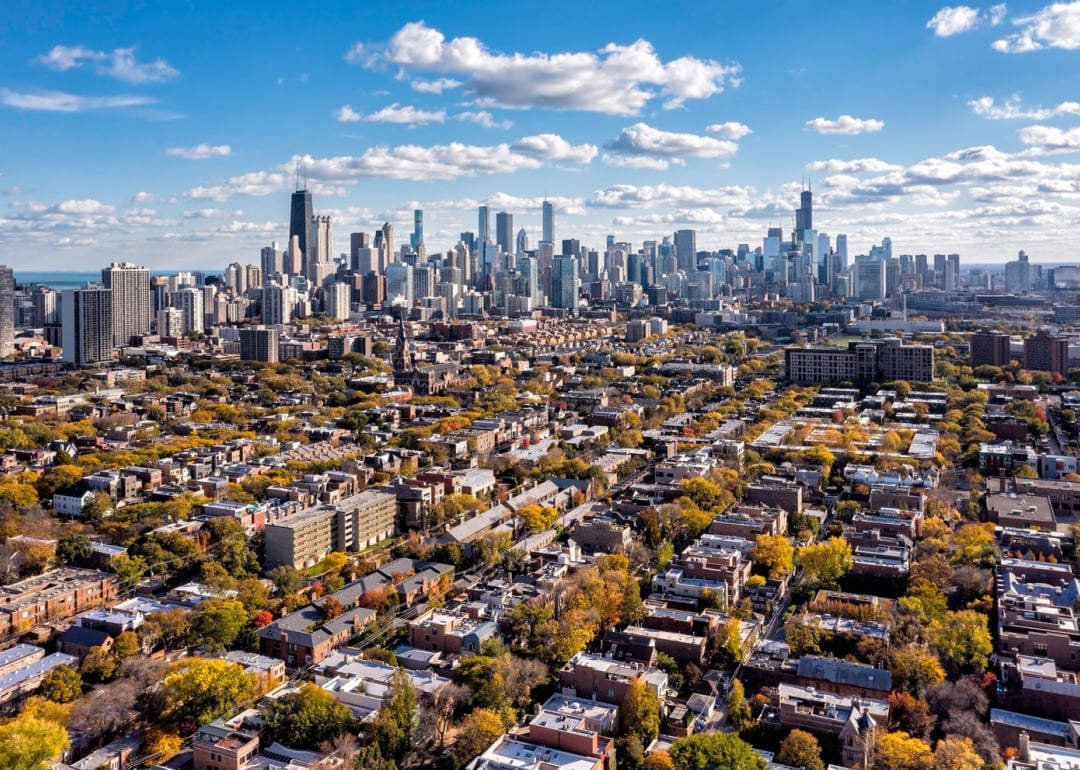
#36. Illinois
- Percent of adult population hungry: 9.9%
- 1-year change: 1.8 percentage points
- Total adult population: 9,564,566
A state commission to end hunger seeks to unite officials, volunteers, business leaders, and others to fight hunger across Illinois. The state also maintains a list of food banks, pantries, and other places hungry people can get help and food.
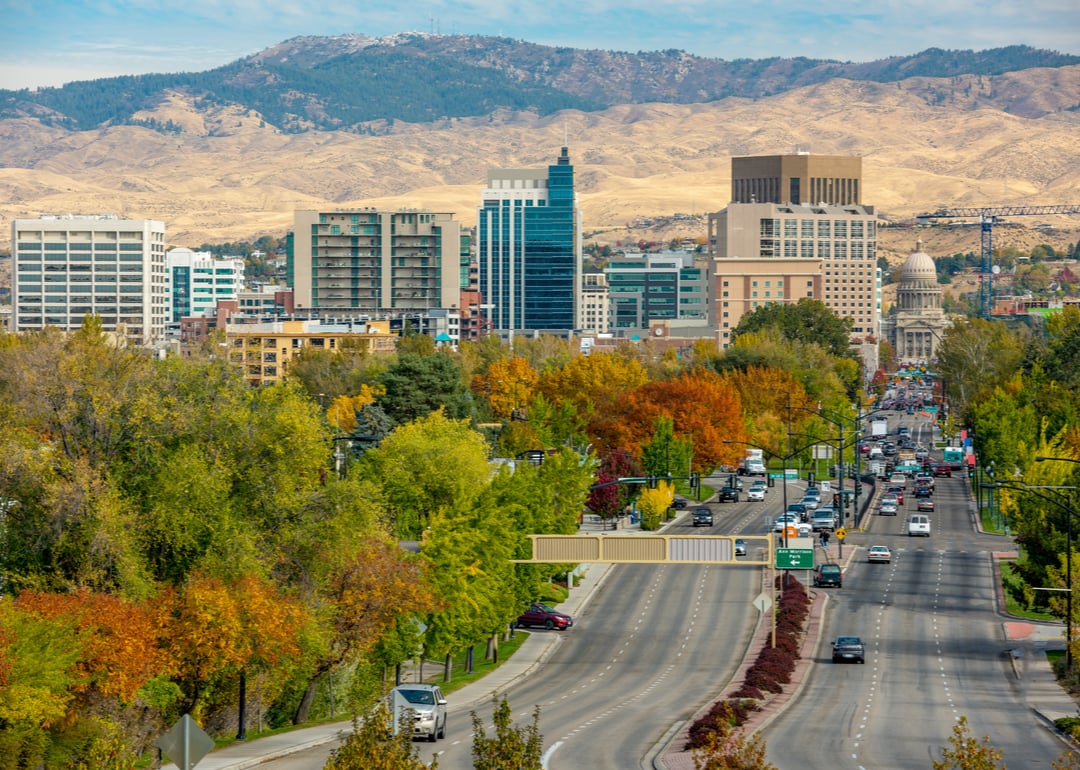
#35. Idaho
- Percent of adult population hungry: 10%
- 1-year change: -0.8 percentage points
- Total adult population: 1,463,645
The Idaho Food Bank reports that Shoshone County has the highest food insecurity rate in the state, at 14.1% of residents, while Teton County has the lowest rate, at 5.4%. The group also provides an interactive map for people to find food help near them.
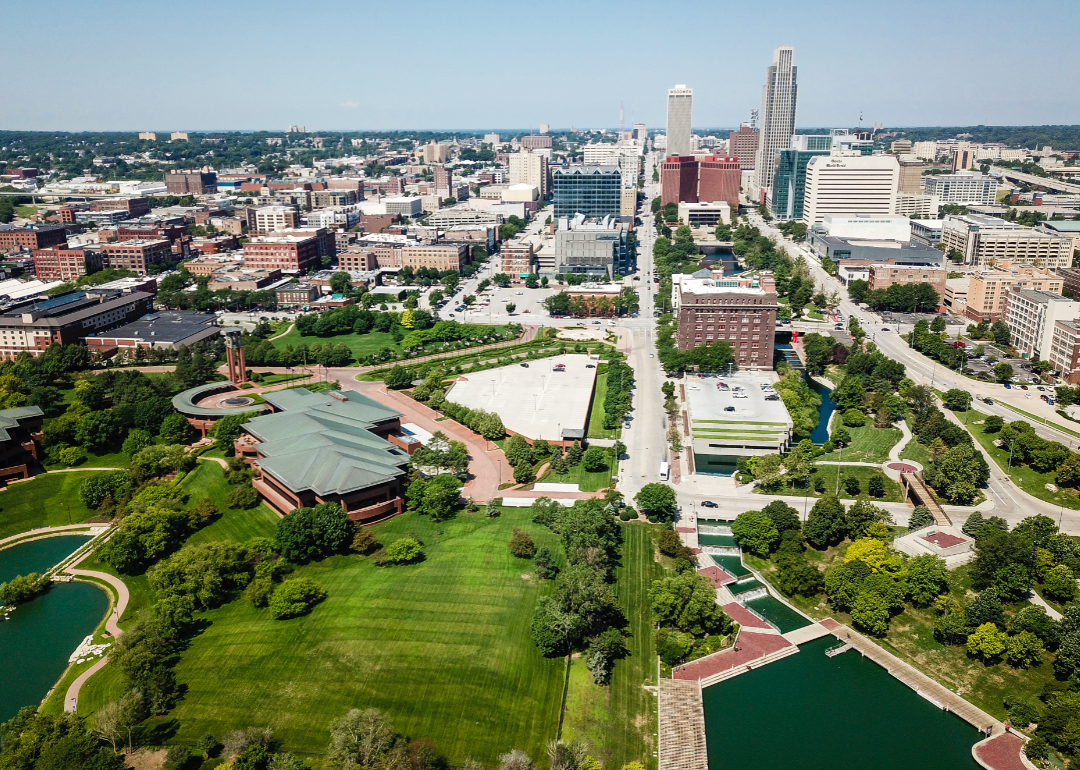
#34. Nebraska
- Percent of adult population hungry: 10.2%
- 1-year change: -1.5 percentage points
- Total adult population: 1,455,973
Efforts to fight hunger in Nebraska include two food banks, a mobile food pantry, and dozens of locations to get free food or full meals.

#33. Michigan
- Percent of adult population hungry: 10.7%
- 1-year change: 0.8 percentage points
- Total adult population: 7,735,119
Michigan State University received a $500,000 grant to address hunger in Michigan's Black and Indigenous communities and other underserved communities. The state government is also working on the problem, and a July 2023 law change expanded eligibility for support. Seven food banks in the state supply more than 3,000 agencies that provide food to those in need.

#32. Pennsylvania
- Percent of adult population hungry: 10.7%
- 1-year change: 2.2 percentage points
- Total adult population: 9,933,427
The state government wants to reach everyone in Pennsylvania eligible for federal food-aid benefits and reports reducing the food insecurity rate across the state by 5 percentage points between 2015 and 2022. The state's Department of Agriculture maintains a list of food banks and other food sources for Pennsylvanians in need.
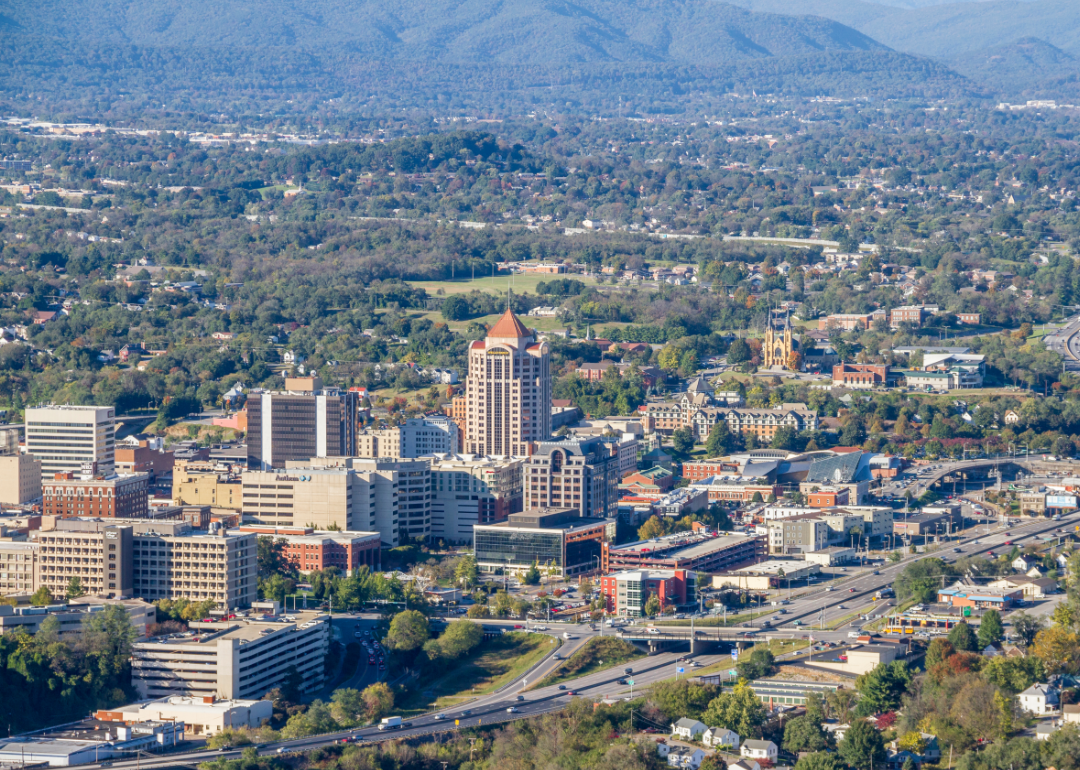
#31. Virginia
- Percent of adult population hungry: 10.7%
- 1-year change: 1.0 percentage points
- Total adult population: 6,631,493
The state's seven food banks helped 1,800 agencies and distribution sites provide 135 million pounds of food to 800,000 Virginians in 2022. An interactive map lets people in need know where to turn for help with food.

#30. Connecticut
- Percent of adult population hungry: 10.8%
- 1-year change: 4.1 percentage points
- Total adult population: 2,789,532
Connecticut Foodshare, the state's largest food bank, provided nearly 39 million meals to residents in need in 2022. The agency partners with 650 food pantries, kitchens, and mobile delivery services to reach every corner of the Nutmeg State.

#29. New York
- Percent of adult population hungry: 10.8%
- 1-year change: 0.1 percentage points
- Total adult population: 15,036,419
The Nourish New York initiative started during the COVID-19 pandemic but has continued to connect New Yorkers with food assistance and make plans for expanding aid and reducing demand. Eight regional food banks help supply millions of pounds of food to those in need.
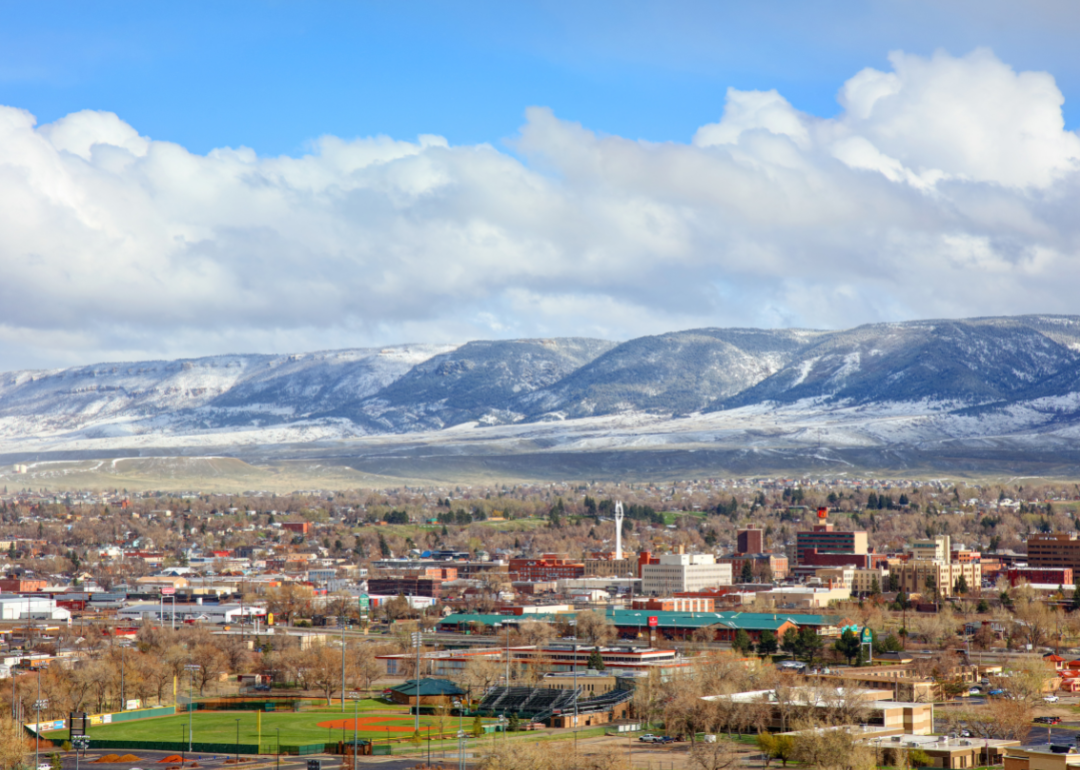
#28. Wyoming
- Percent of adult population hungry: 10.9%
- 1-year change: -0.5 percentage points
- Total adult population: 442,798
The state's first lady, Jennie Gordon, spearheads a statewide effort to fight hunger. The Food Bank of Wyoming has 160 partner agencies that serve people across all 23 of the state's counties and works to reduce food waste by collecting usable food and distributing it to those in need.
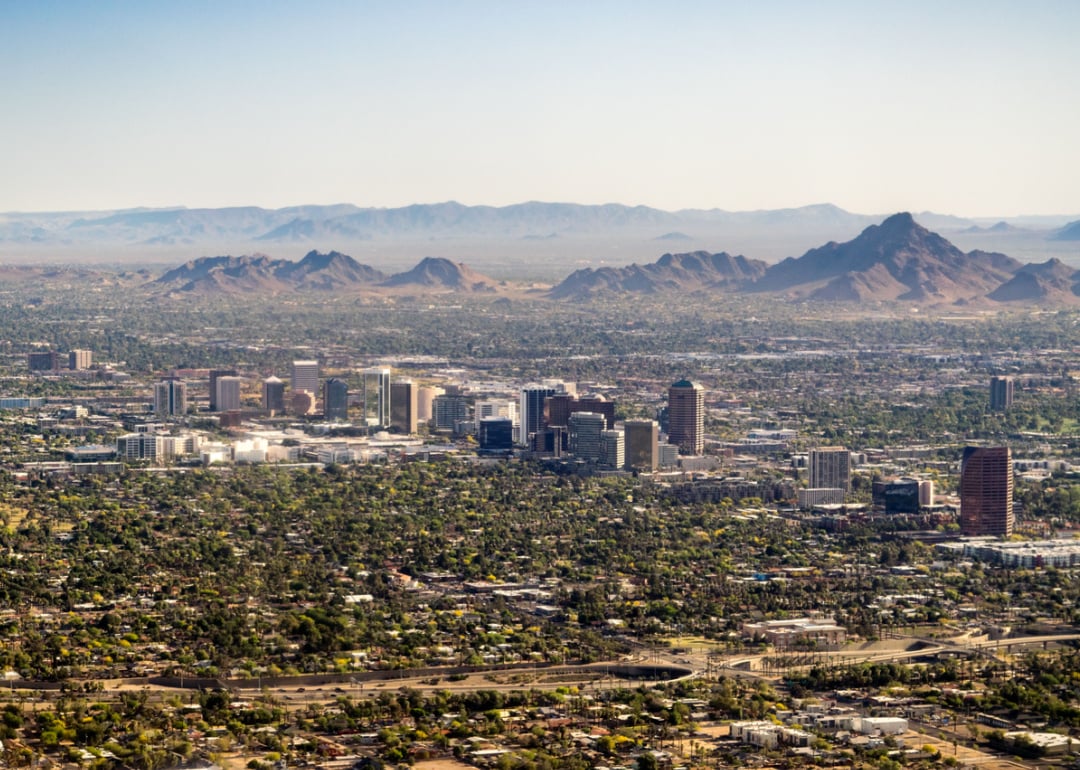
#27. Arizona
- Percent of adult population hungry: 11%
- 1-year change: 0.2 percentage points
- Total adult population: 5,723,779
An AmeriCorps grant will fund 33 volunteers at Arizona food banks to help collect and distribute food for those in need. The Arizona Food Bank Network brings together five food banks and 1,000 agencies to feed 450,000 hungry Arizonans each month.

#26. Wisconsin
- Percent of adult population hungry: 11.1%
- 1-year change: 2.4 percentage points
- Total adult population: 4,538,089
Through Feeding Wisconsin, the state association of six food banks, 750 social service agencies, and 1,500 feeding programs statewide feed almost 600,000 residents yearly. It diverts 16 million pounds of excess food from stores and restaurants and another 3 million pounds of agricultural surplus, helping feed people rather than contributing to food waste.

#25. Tennessee
- Percent of adult population hungry: 11.2%
- 1-year change: -3.4 percentage points
- Total adult population: 5,455,071
The state has five food banks, but hunger remains a problem. A recent state grant program received applications for over $13 million in hunger-fighting funding, but only has $10 million to give out.
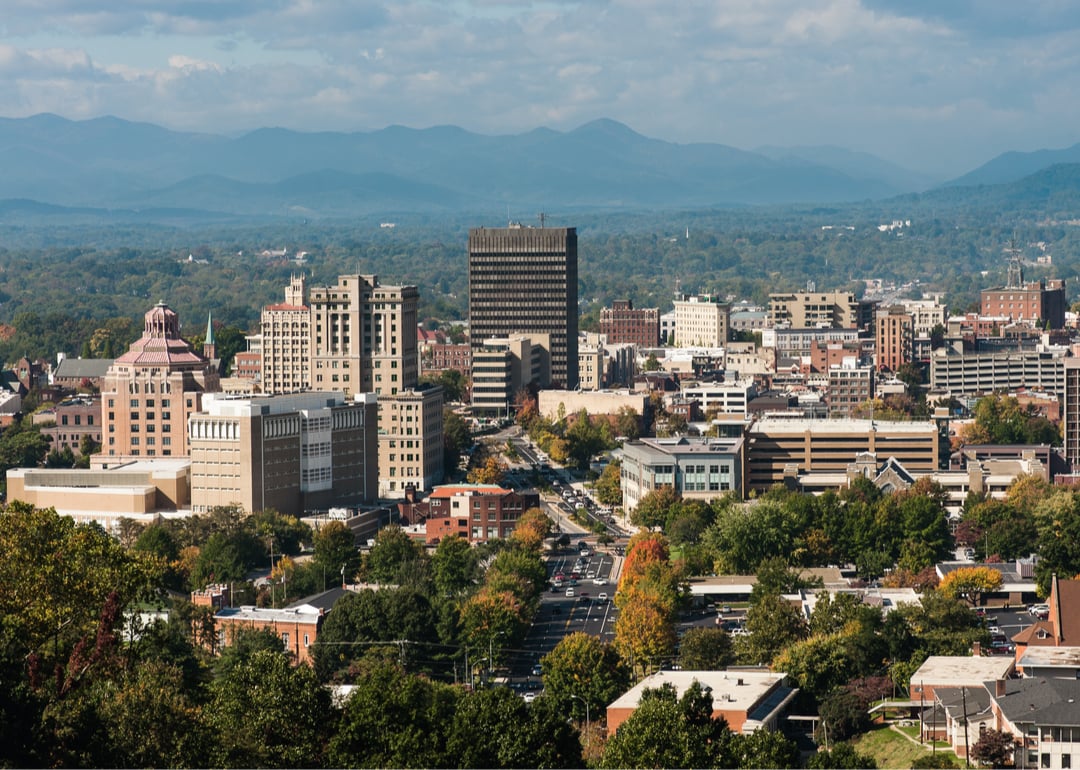
#24. North Carolina
- Percent of adult population hungry: 11.3%
- 1-year change: 0.7 percentage points
- Total adult population: 8,270,414
A network of 10 food banks serves both North and South Carolina. Just one of those, the Food Bank of Central and Eastern North Carolina, provides more than 81 million meals annually to hungry North Carolinians.

#23. Hawaii
- Percent of adult population hungry: 11.6%
- 1-year change: 2.8 percentage points
- Total adult population: 1,104,070
The largest food-relief organization in the 50th state, the Hawai'i Foodbank, distributed 17.4 million pounds of food in 2022 to hungry people on O'ahu and Kaua'i. The Maui Food Bank gives out another 3.25 million pounds a year. The Food Basket coordinates hunger relief efforts on the state's largest island and helps 50,000 people each month.

#22. Florida
- Percent of adult population hungry: 11.8%
- 1-year change: 0.9 percentage points
- Total adult population: 17,896,443
Florida's Department of Agriculture works with farmers and schools statewide to collect and distribute edible, healthy food that would otherwise go to waste. Around the Sunshine State, nine food banks and more than 2,400 community groups and agencies distribute over 400 million pounds of food to hungry Floridians.
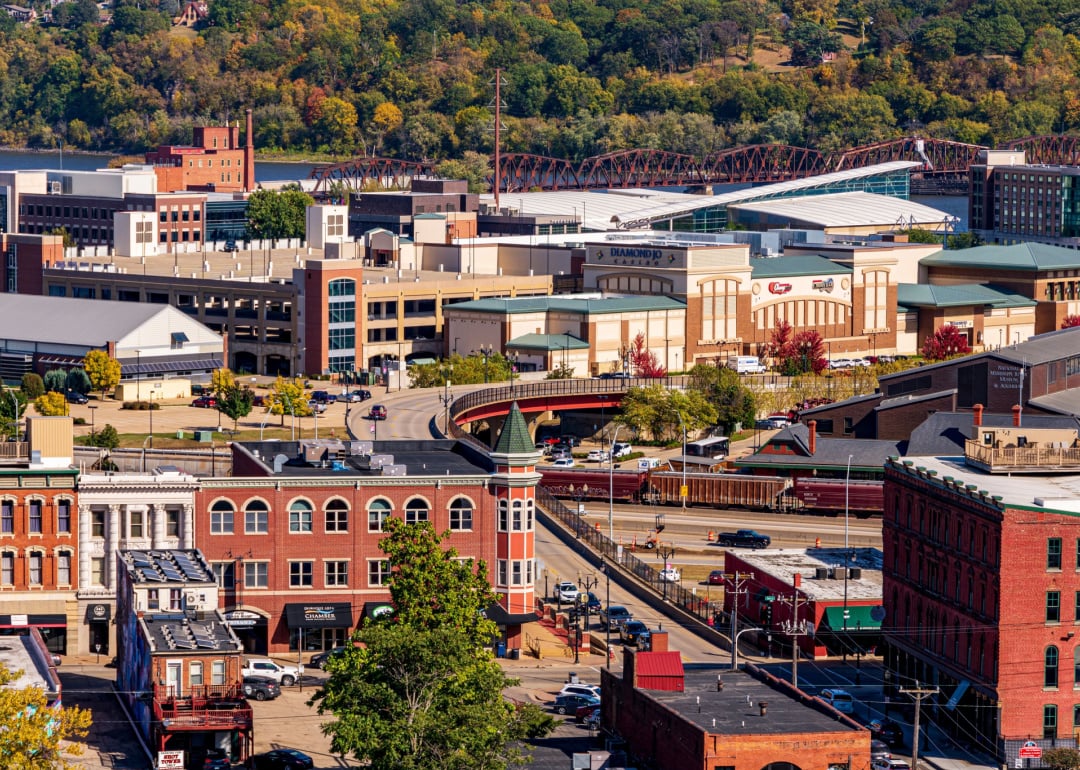
#21. Iowa
- Percent of adult population hungry: 11.9%
- 1-year change: 1.6 percentage points
- Total adult population: 2,391,994
The Iowa Food Bank Association distributed 45 million meals to Iowans in 2021 through six food banks and 1,200 partner organizations. The state government has also contributed $5 million to expand the capacity of food banks in Iowa.
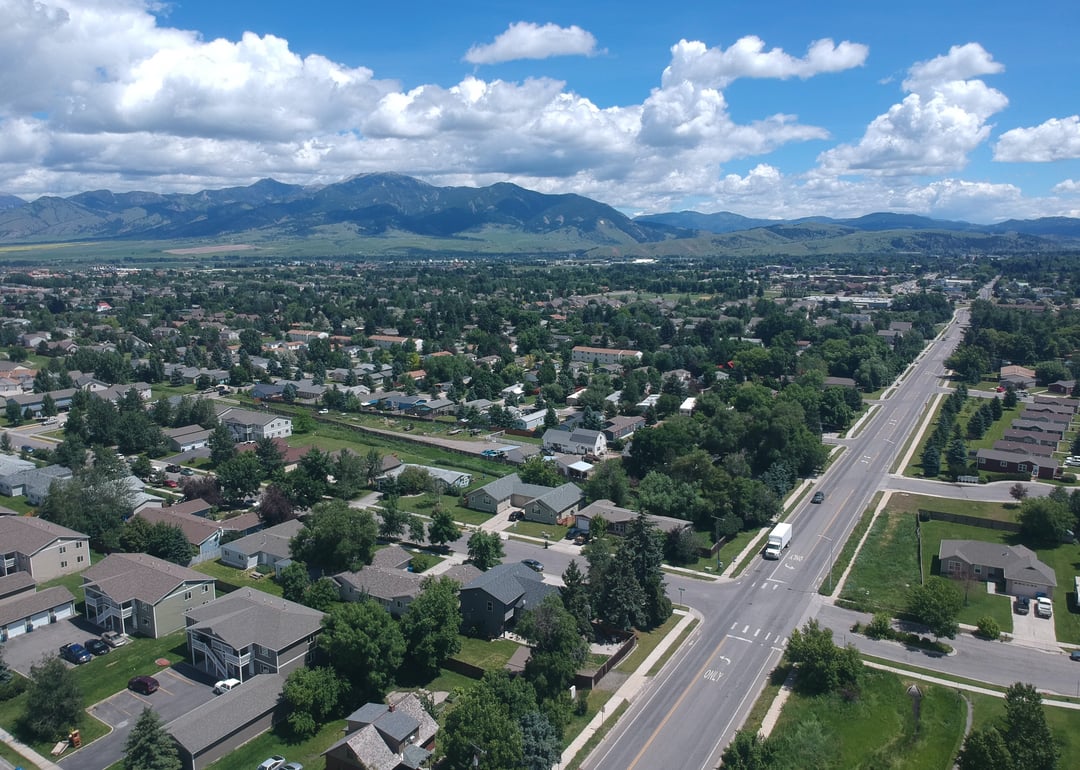
#20. Montana
- Percent of adult population hungry: 11.9%
- 1-year change: 3.7 percentage points
- Total adult population: 880,407
The Montana Food Bank Network distributed 16 million pounds of food to hungry Montanans in 2022. The state also sells a special-interest license plate to raise money to end hunger in Montana.

#19. California
- Percent of adult population hungry: 12%
- 1-year change: -0.6 percentage points
- Total adult population: 29,670,532
In 2021, California food banks distributed more than 1 billion pounds of food, the equivalent of 850 million meals, and with the help of more than 6,000 food pantries, kitchens, and other distribution groups, provided food to 4.5 million people each month on average. State government efforts include partnerships with farmers and ranchers to use what they might not be able to sell in the marketplace.

#18. Alabama
- Percent of adult population hungry: 12.1%
- 1-year change: -4.8 percentage points
- Total adult population: 3,852,301
Eight food banks cover the state, and the Alabama Public Health website highlights not only traditional food pantries but also "little free pantries," a grassroots network of neighbors who make food available to those in need.

#17. Maryland
- Percent of adult population hungry: 12.5%
- 1-year change: 1.4 percentage points
- Total adult population: 4,704,806
The Maryland Food Bank distributed over 40 million meals in 2022 and has an online map that helps people find food where needed. It also operates several mobile food markets that bring healthy food options to people who cannot travel to stores that offer better food options.

#16. West Virginia
- Percent of adult population hungry: 12.5%
- 1-year change: -8.8 percentage points
- Total adult population: 1,370,064
The Mountaineer Food Bank maintains an interactive map of locations people in need can get food across West Virginia. With programs targeting children, veterans, and those in rural areas, the agency provides 17 million meals a year to hungry West Virginians.

#15. Nevada
- Percent of adult population hungry: 12.6%
- 1-year change: 1.6 percentage points
- Total adult population: 2,494,294
The Silver State has two food banks, one serving the northern two-thirds of the state and the other serving four counties in the southern part. Both have interactive maps to direct people to aid near them.

#14. South Carolina
- Percent of adult population hungry: 12.6%
- 1-year change: -2.6 percentage points
- Total adult population: 4,116,940
A network of 10 food banks serves both North and South Carolina. Harvest Hope Food Bank, covering 20 counties in northern South Carolina, provides 20 million meals annually. The Lowcountry Food Bank, covering another 10 counties in the southeastern part, distributed 39.7 million pounds of food in 2021. Food banks based in North Carolina and Georgia serve the state's 16 other counties.
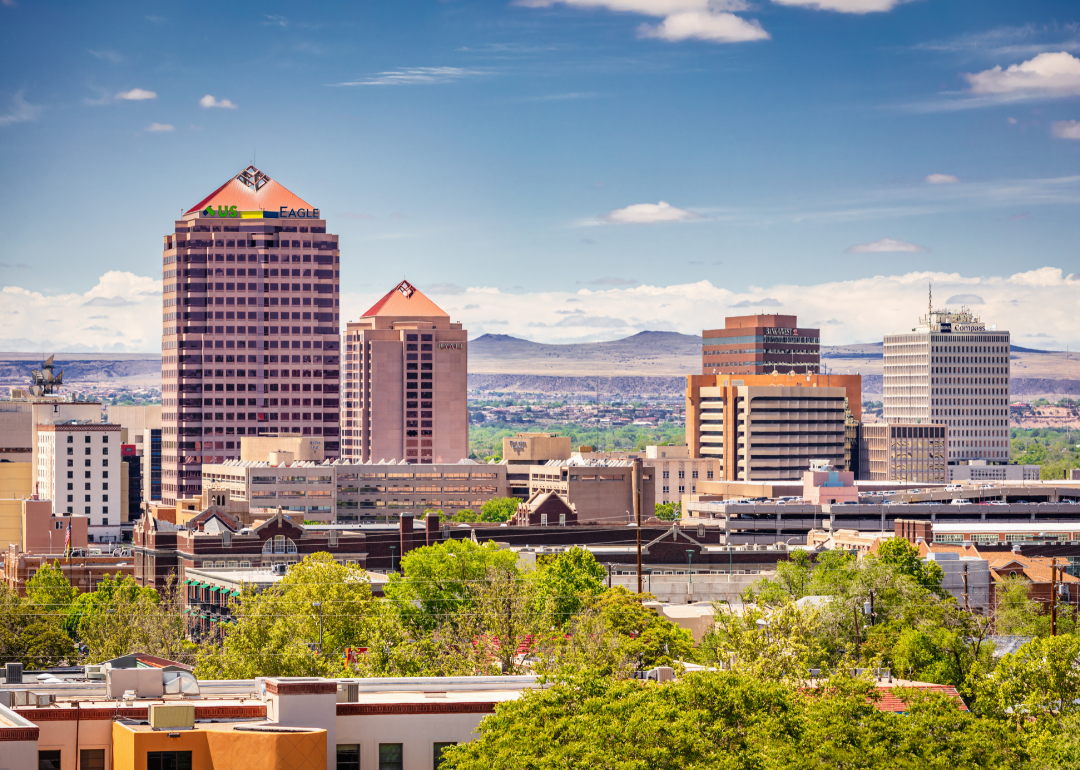
#13. New Mexico
- Percent of adult population hungry: 12.8%
- 1-year change: -2.5 percentage points
- Total adult population: 1,622,106
Low income is a major cause of food insecurity in Santa Fe and across the state, according to a 2023 Source New Mexico news report. The state's five food banks also work with New Mexico farmers to buy and provide food for those in need. People can view an interactive map to see which food bank, and which of its partners, is nearest. The state also offers money to help college students afford food.

#12. South Dakota
- Percent of adult population hungry: 12.8%
- 1-year change: -0.6 percentage points
- Total adult population: 675,019
Feeding South Dakota provided 15.5 million meals to people across the state in 2022. That included 12.9 million pounds of food, over 3,400 backpacks for children to take home for weekends and school holidays, more than 1,800 boxes to senior citizens, and over 10,000 families served at mobile food pantries.
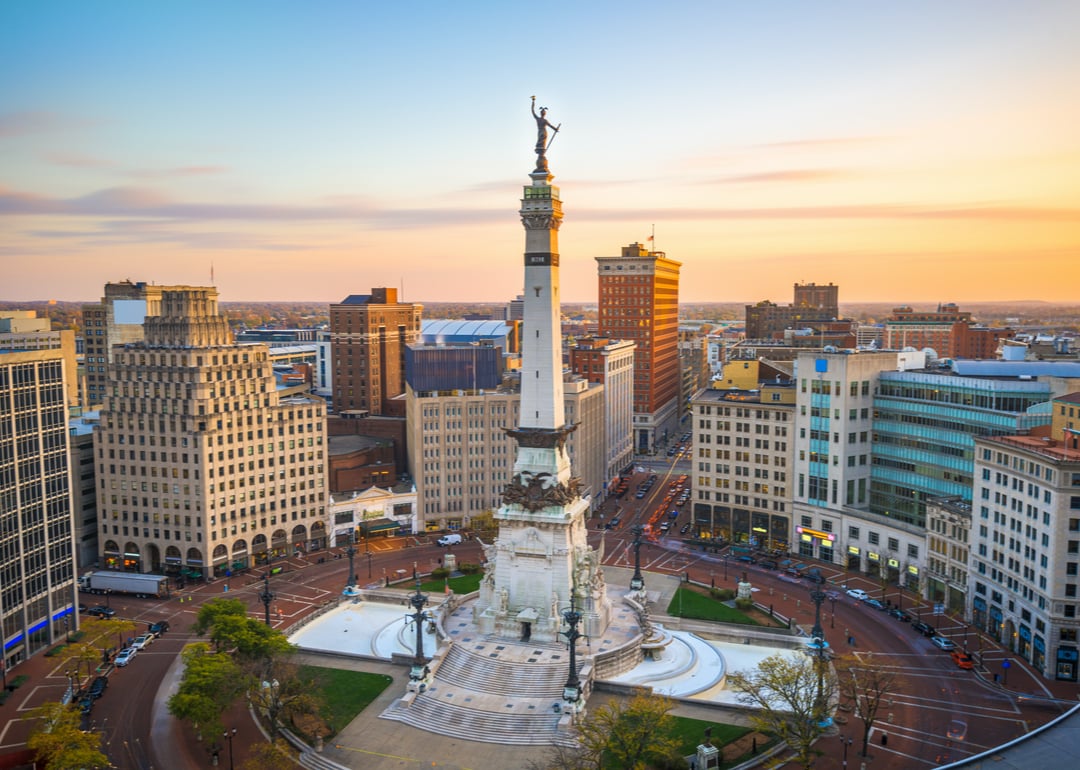
#11. Indiana
- Percent of adult population hungry: 13%
- 1-year change: 1.8 percentage points
- Total adult population: 5,124,472
Across Indiana, 11 food banks help feed hungry people in the state. They partner with pork farmers, deer hunters, vegetable farmers, and corporate donors to collect and distribute food to those in need. An interactive map directs people to help near their homes.

#10. Ohio
- Percent of adult population hungry: 13%
- 1-year change: 1.1 percentage points
- Total adult population: 8,934,322
The Buckeye State has 12 food banks and 3,600 groups and agencies working to end hunger in Ohio. Together, they provided 243 million pounds of food, enough for 202 million meals, to 9.9 million people in 3.5 million households in 2022 and 13.7 million prepared meals.

#9. Georgia
- Percent of adult population hungry: 13.1%
- 1-year change: 0.0 percentage points
- Total adult population: 8,284,651
Georgia is served by nine regional food banks, which serve seniors, families, children, and military members without enough food. An interactive map shows who can get help from where, and a program partnering with farmers rescues 14 million pounds of food from the trash each year.

#8. Kentucky
- Percent of adult population hungry: 13.1%
- 1-year change: -2.4 percentage points
- Total adult population: 3,405,196
The Feeding Kentucky network of food banks, pantries, and other agencies distributed 85 million meals in 2022. An interactive map helps people find their most convenient food-aid source.
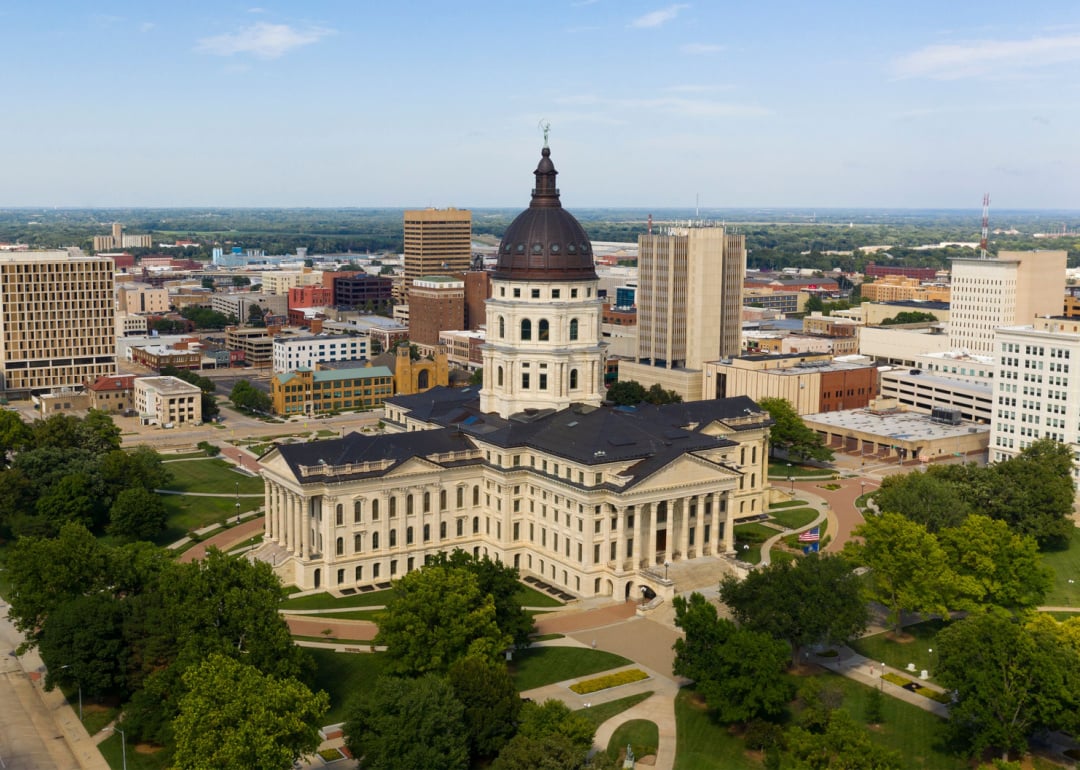
#7. Kansas
- Percent of adult population hungry: 13.4%
- 1-year change: 2.4 percentage points
- Total adult population: 2,171,506
Three food banks cover Kansas' 105 counties. The Kansas Food Bank served 85 counties and fed nearly 1 million people in 2021. An interactive statewide map helps people find their nearest food source and food aid.

#6. Oklahoma
- Percent of adult population hungry: 13.9%
- 1-year change: 3.0 percentage points
- Total adult population: 2,986,911
A state program doubles the amount of money available to federal food-aid recipients in Oklahoma. Two regional food banks also serve the state, and a special federal program provides food to Native Americans in need on and near reservations in Oklahoma.

#5. Alaska
- Percent of adult population hungry: 14.5%
- 1-year change: 4.8 percentage points
- Total adult population: 530,263
Rural Alaskans are more likely to be food-insecure than urban Alaskans, according to the Food Bank of Alaska. In the Kusilvak region, more than 1 in 4 people are hungry; 1 in 5 are in Bethel, 400 miles west of Anchorage. The Food Bank's mobile food pantry program reached almost 39,000 families in 2022. That year, its summer food program served 34,000 meals to children during the summer school break and distributed 21,000 food boxes to seniors in need.
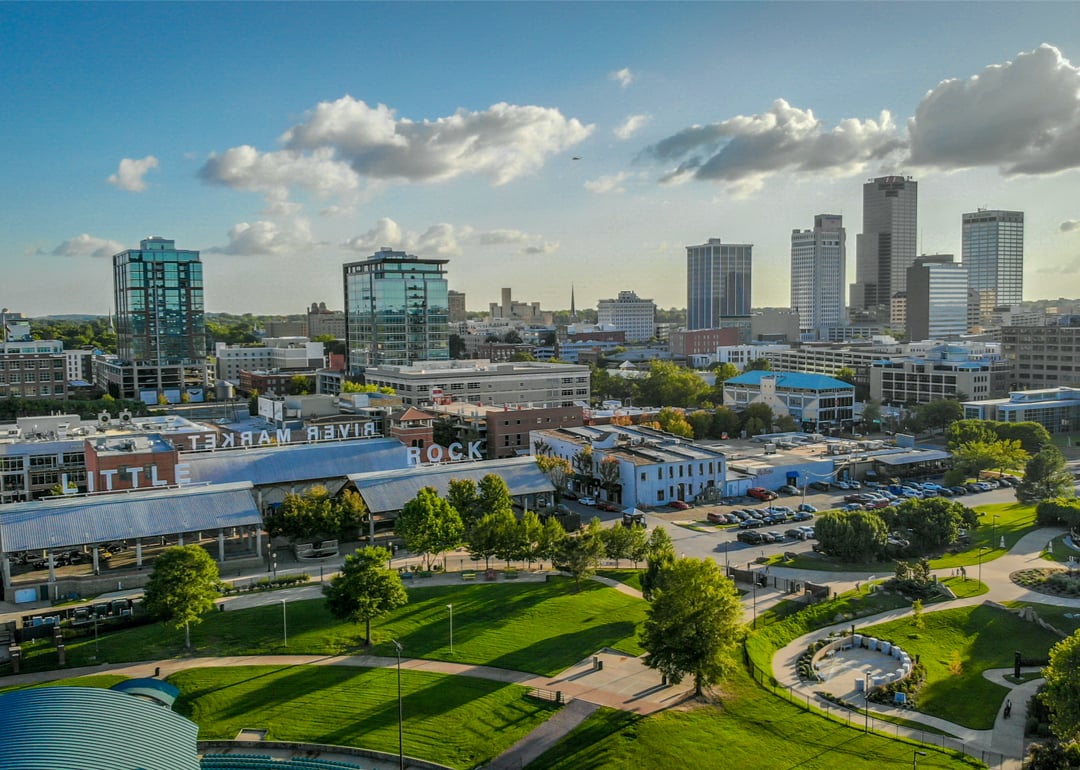
#4. Arkansas
- Percent of adult population hungry: 16.7%
- 1-year change: 2.0 percentage points
- Total adult population: 2,290,513
Six food banks cover the state's 75 counties. The largest, Arkansas Foodbank, works with over 400 groups and agencies in its 33-county territory to feed people in need, including through mobile food pantries.

#3. Texas
- Percent of adult population hungry: 16.7%
- 1-year change: 5.1 percentage points
- Total adult population: 22,460,717
A 2022 statewide report found that Black and Latino Texans are much more likely to face hunger than white Texans. The Feeding Texas network provides food to 5 million Texans annually across the state's 254 counties.
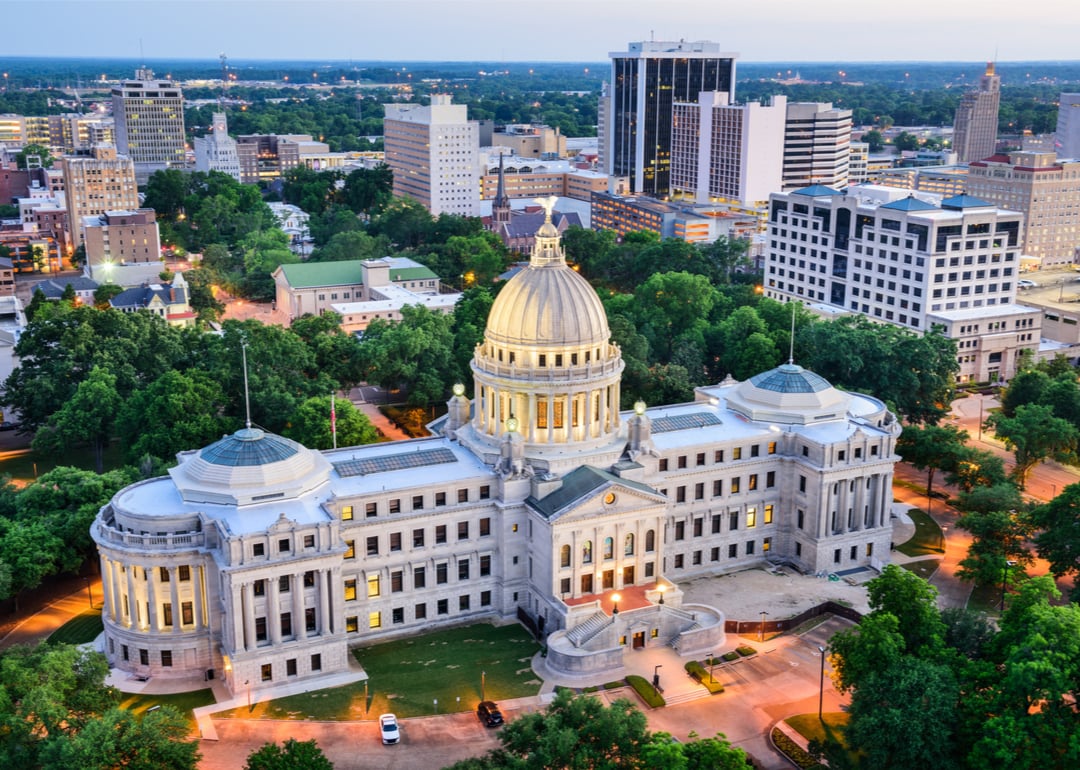
#2. Mississippi
- Percent of adult population hungry: 17.5%
- 1-year change: -0.2 percentage points
- Total adult population: 2,173,482
Over 400 agencies and delivery sites across Mississippi provide 18 million pounds of food to 1.8 million Mississippians every year with the help of the Mississippi Food Network. It helps coordinate school-based programs that send food home with kids after classes are over for the day, on weekends and school vacations, and in the summer. Special programs also help seniors and those who can't travel to get food.

#1. Louisiana
- Percent of adult population hungry: 18.6%
- 1-year change: 7.0 percentage points
- Total adult population: 3,394,886
Five food banks help provide more than 50 million meals to more than 350,000 people across the state each year. Nearly one-third of Louisiana households eligible for federal food aid are not signed up to receive it.
Data reporting by Dom DiFurio. Story editing by Jeff Inglis. Copy editing by Paris Close.



